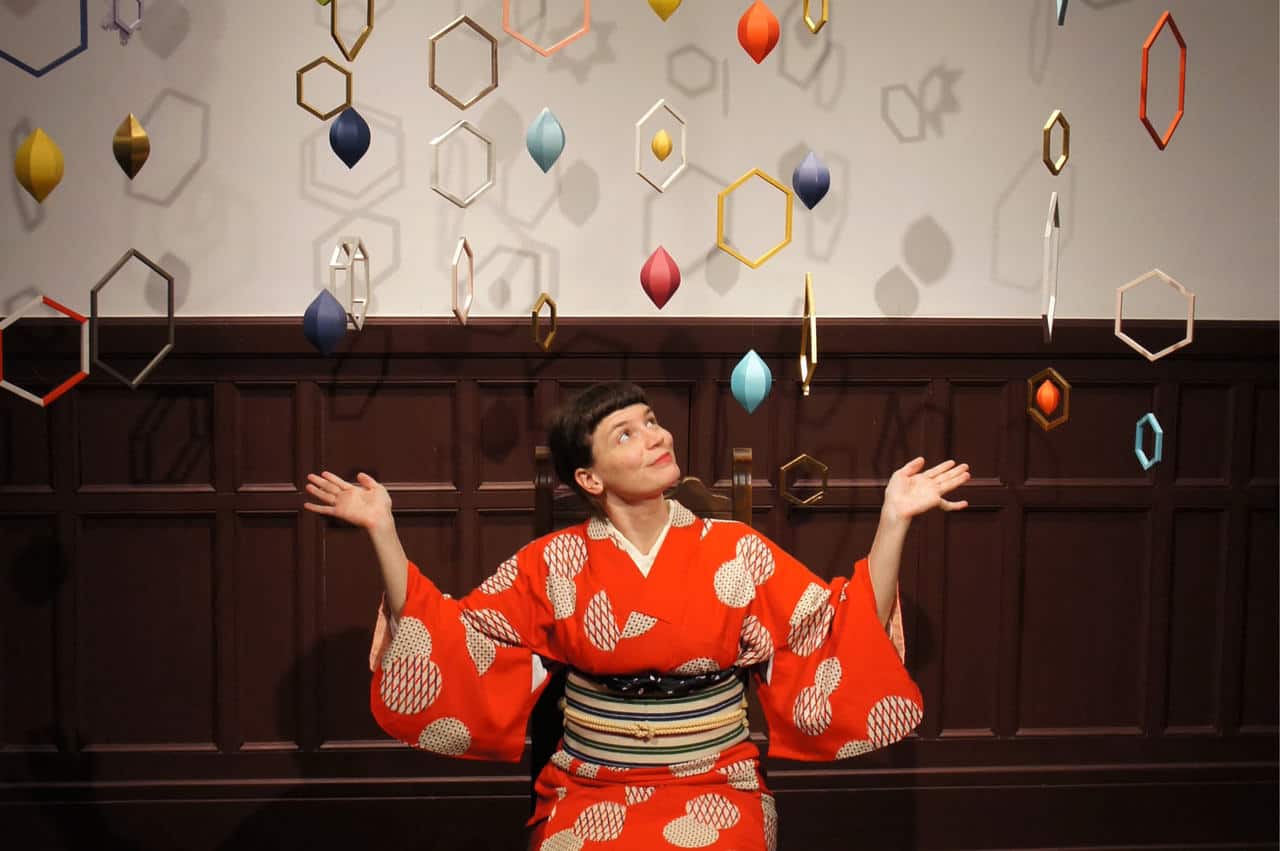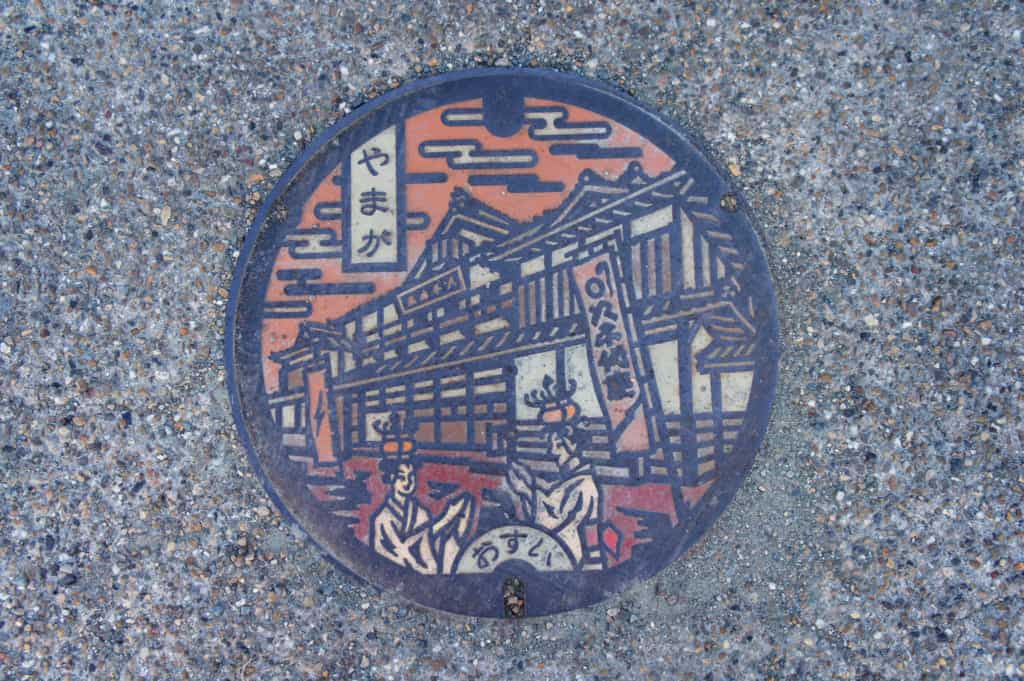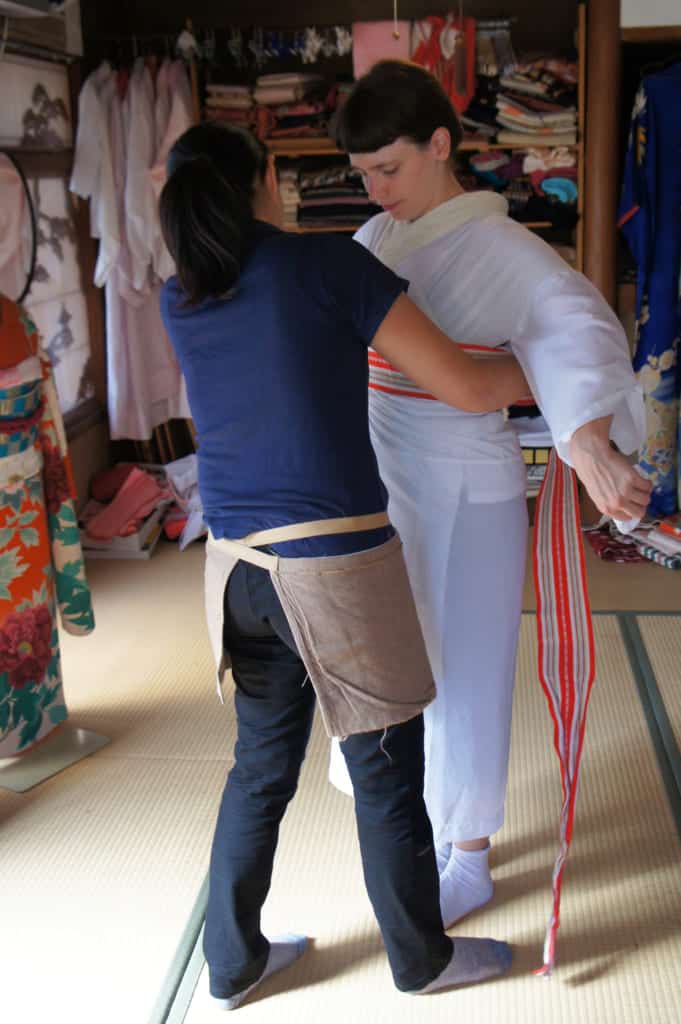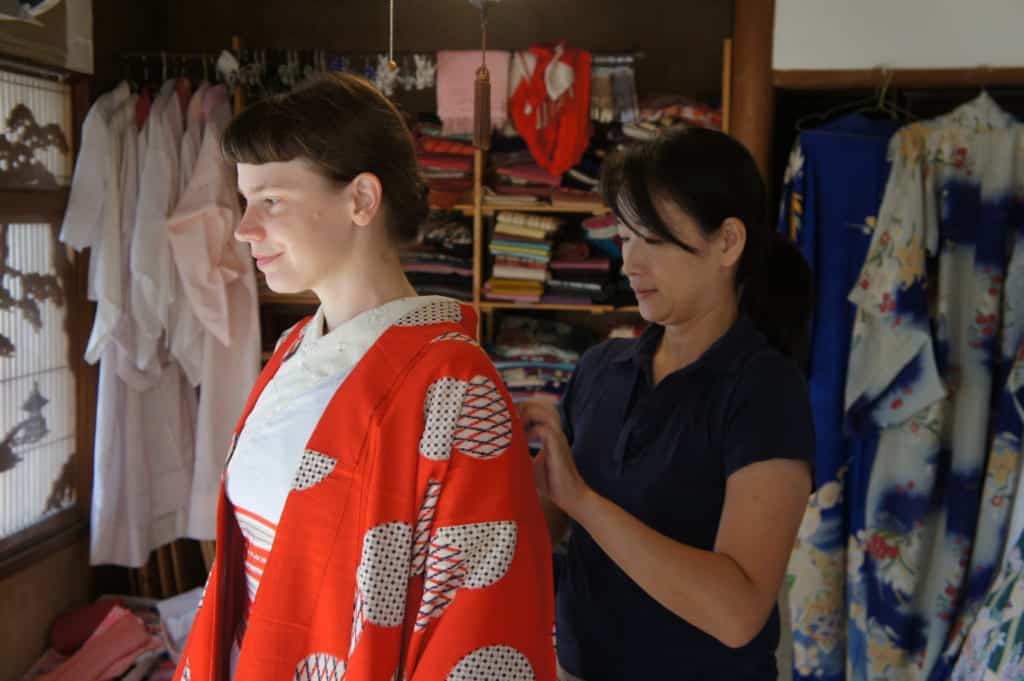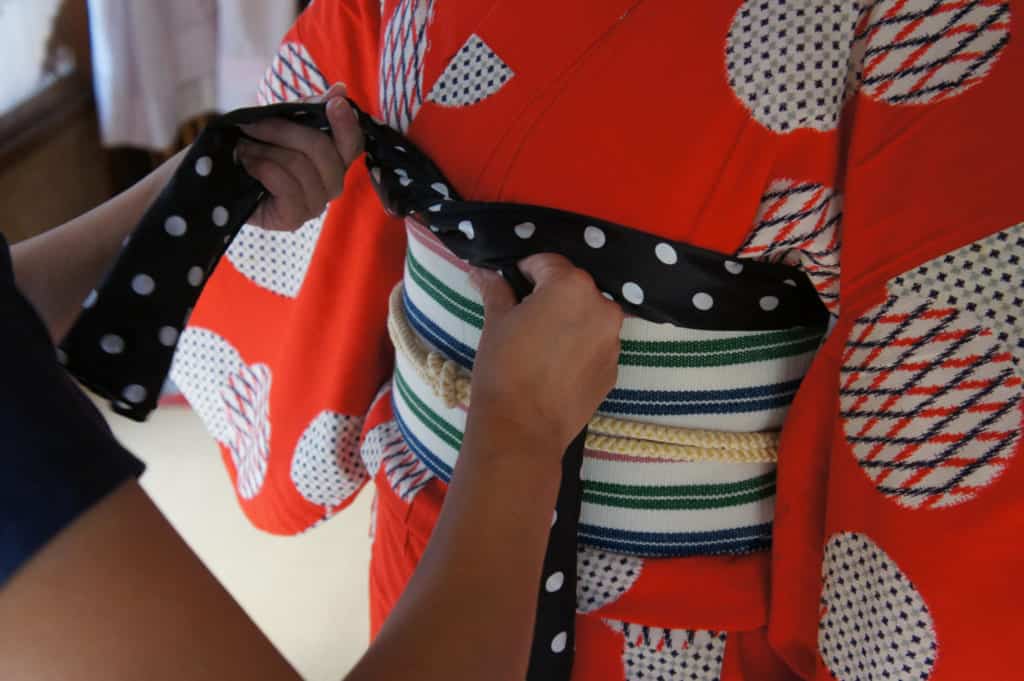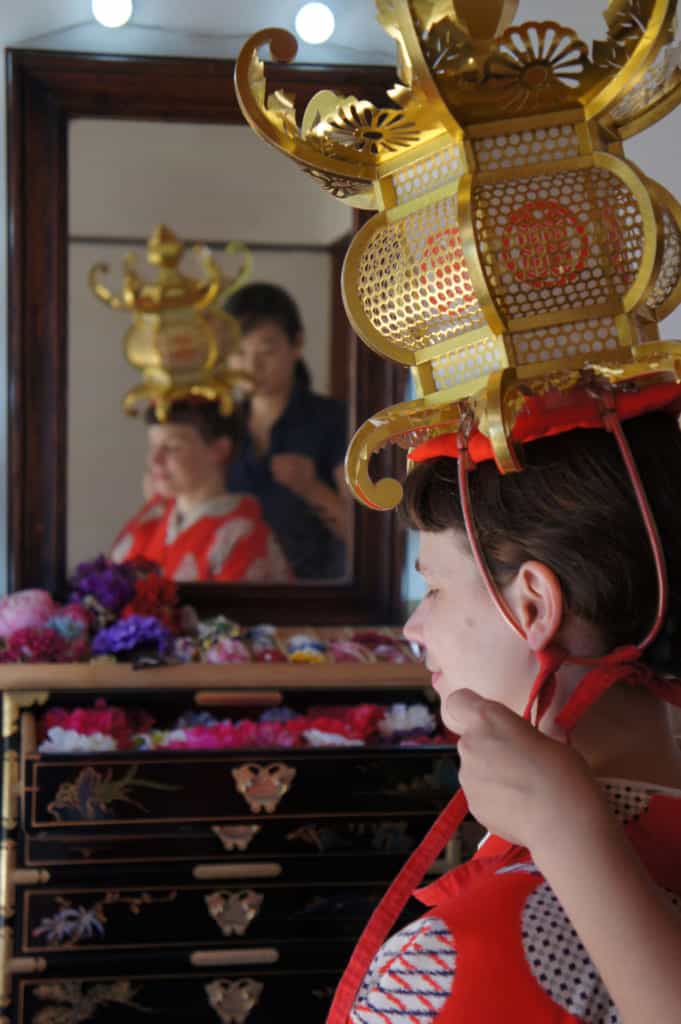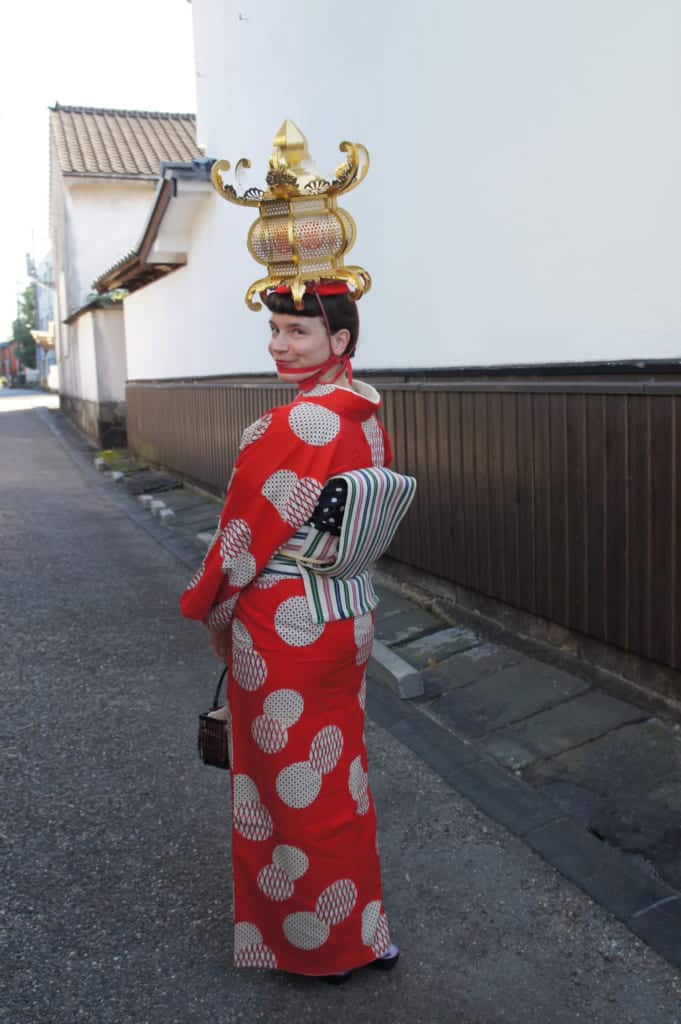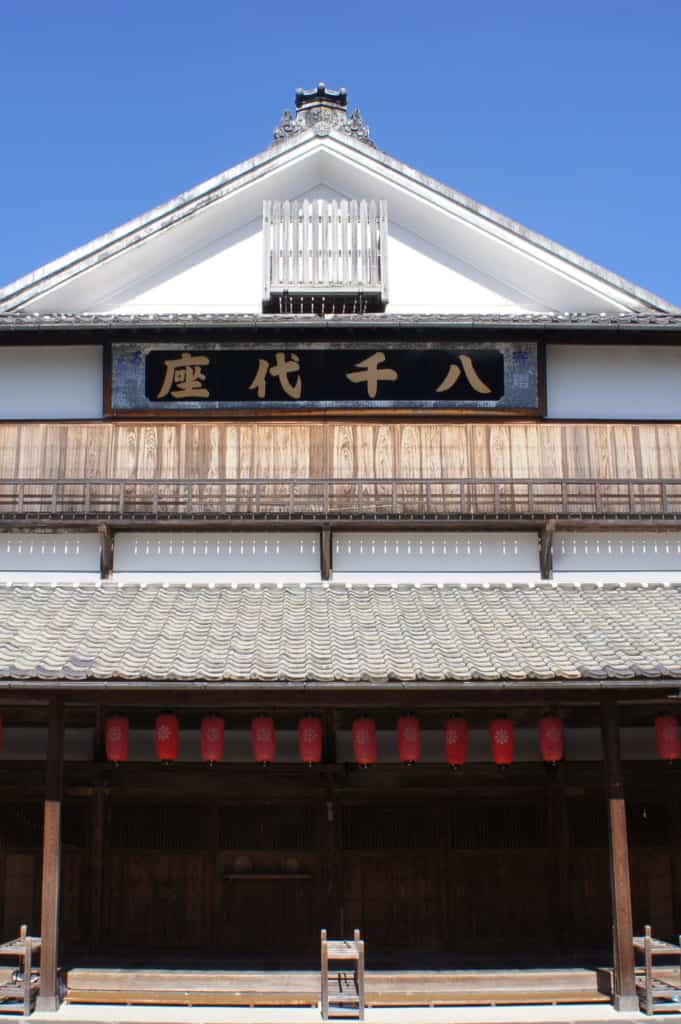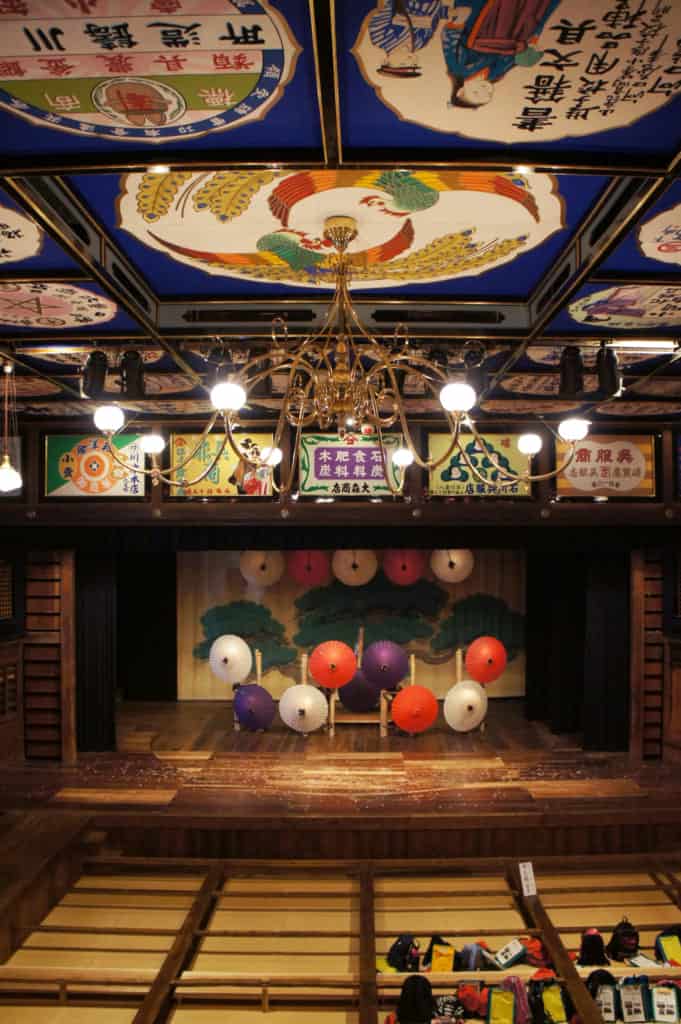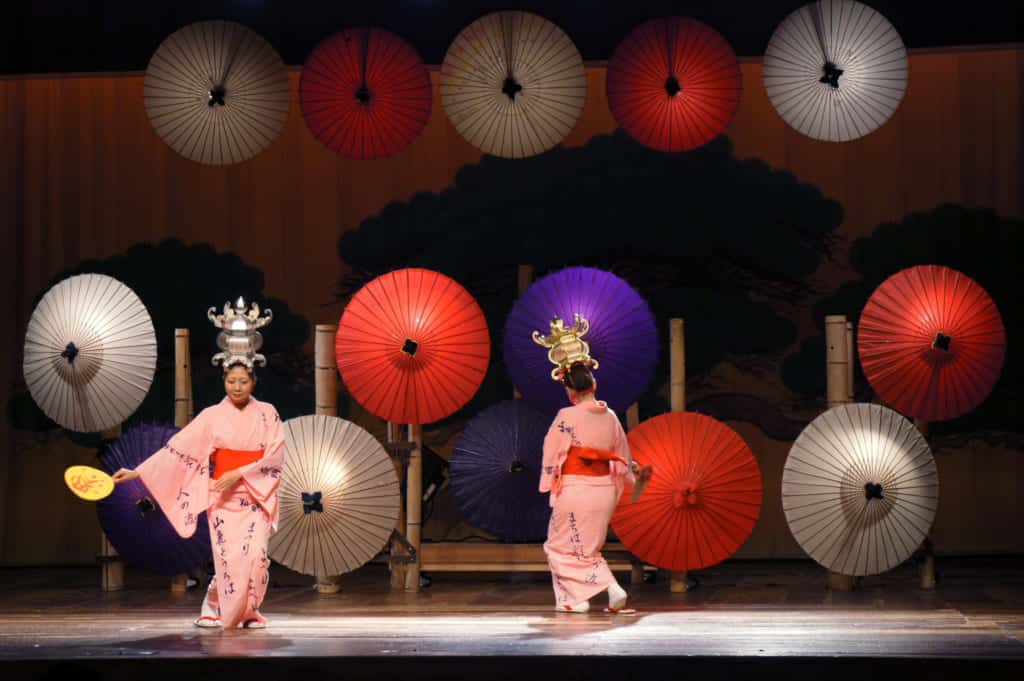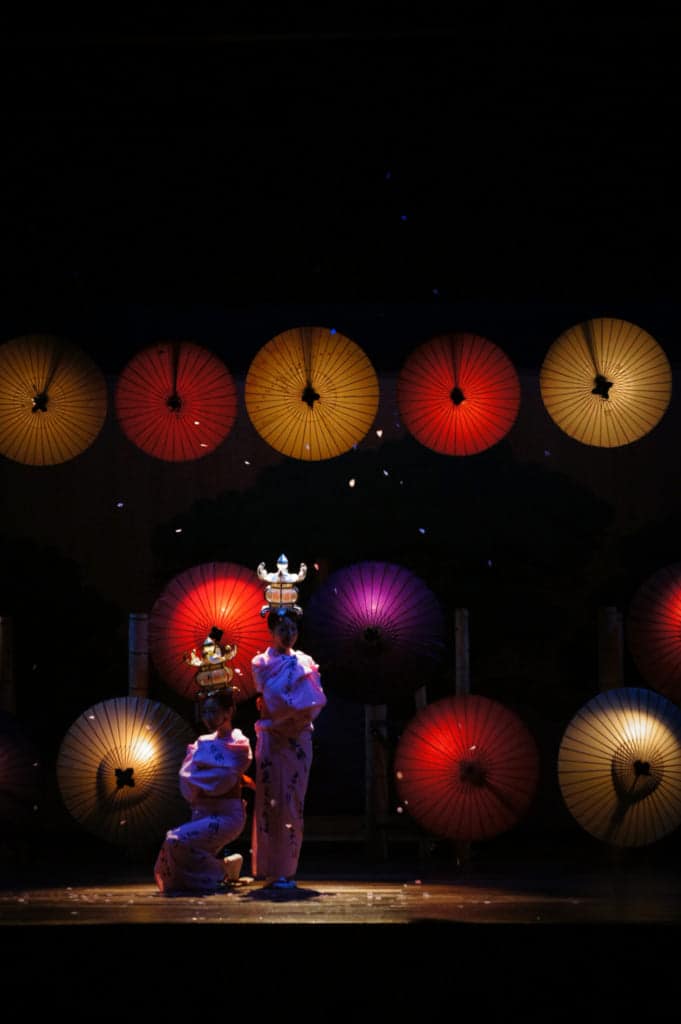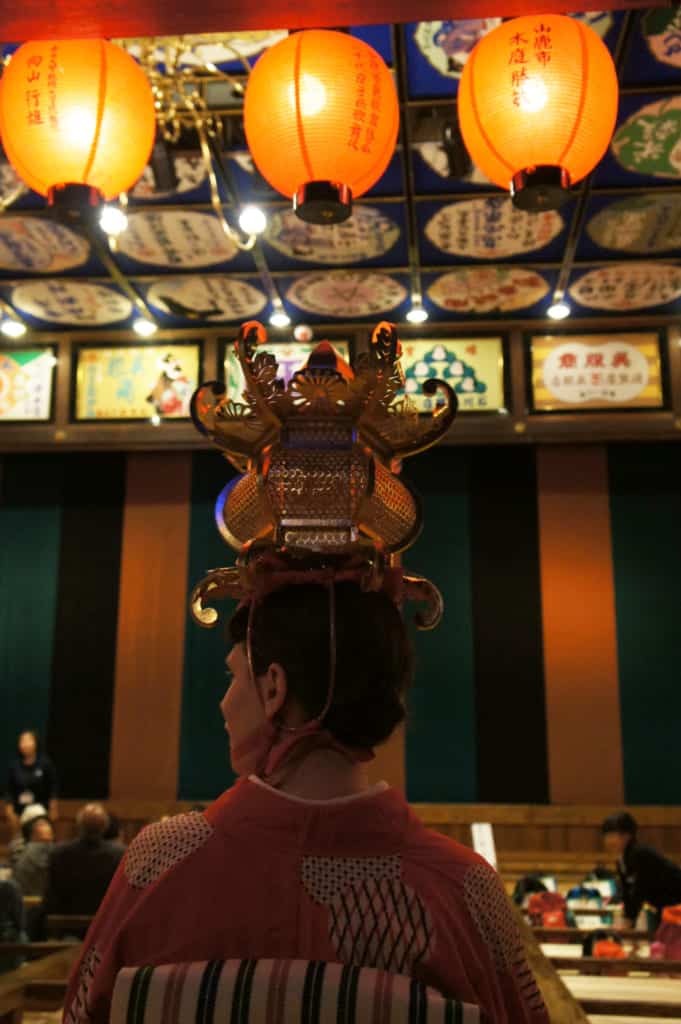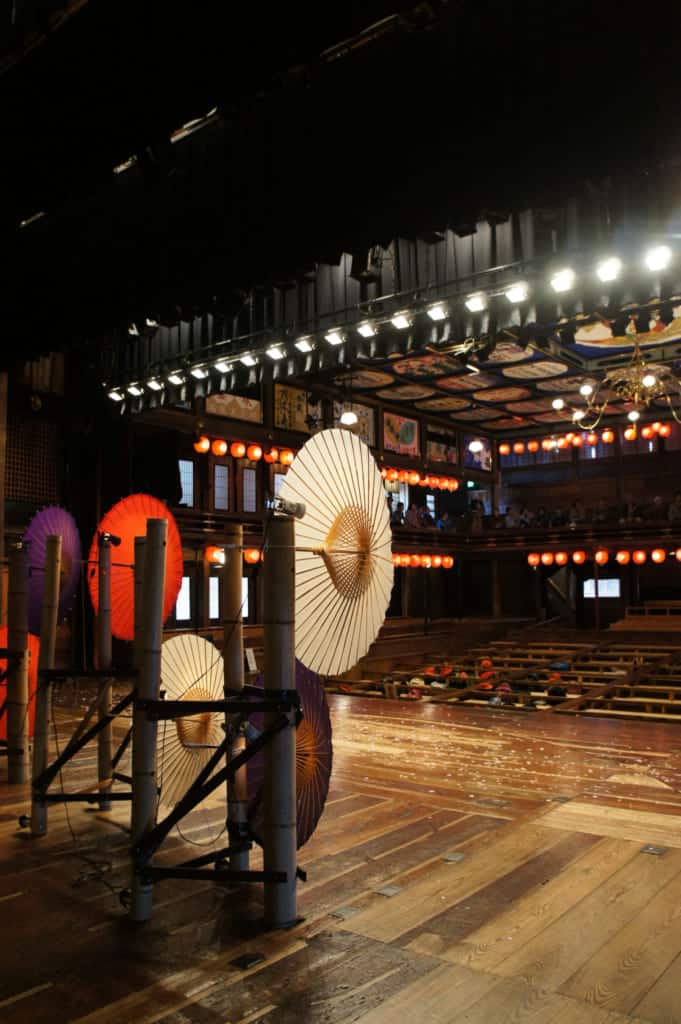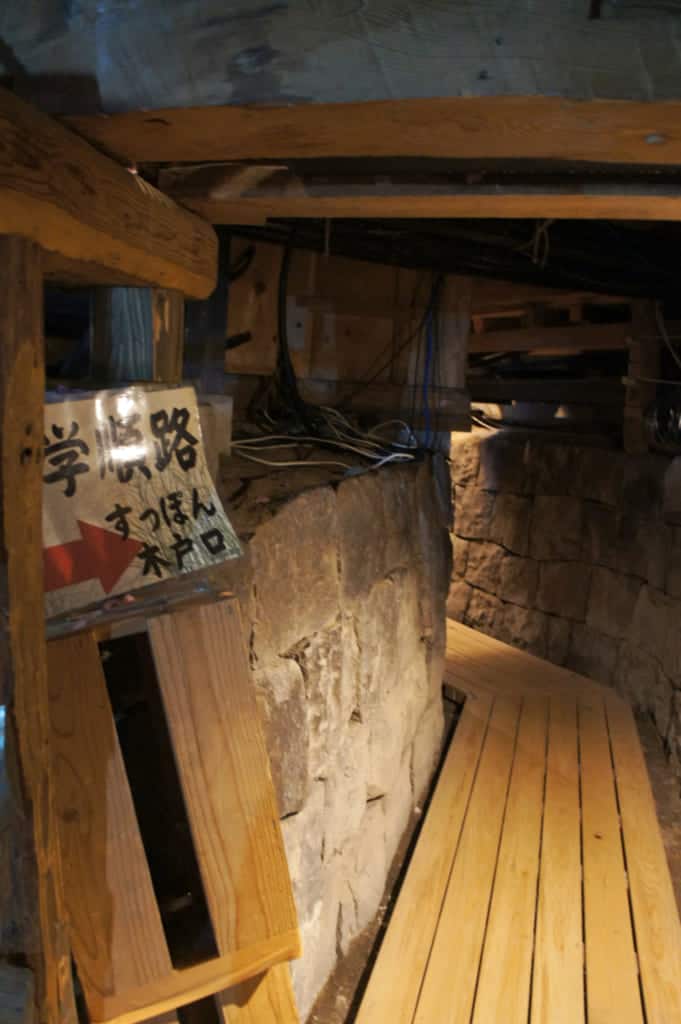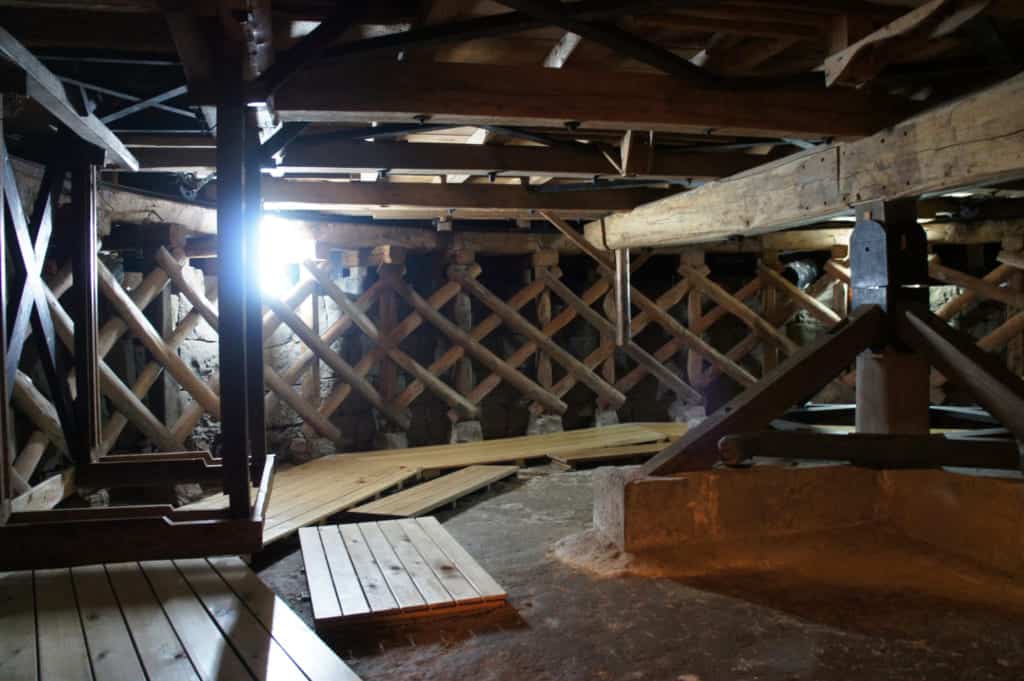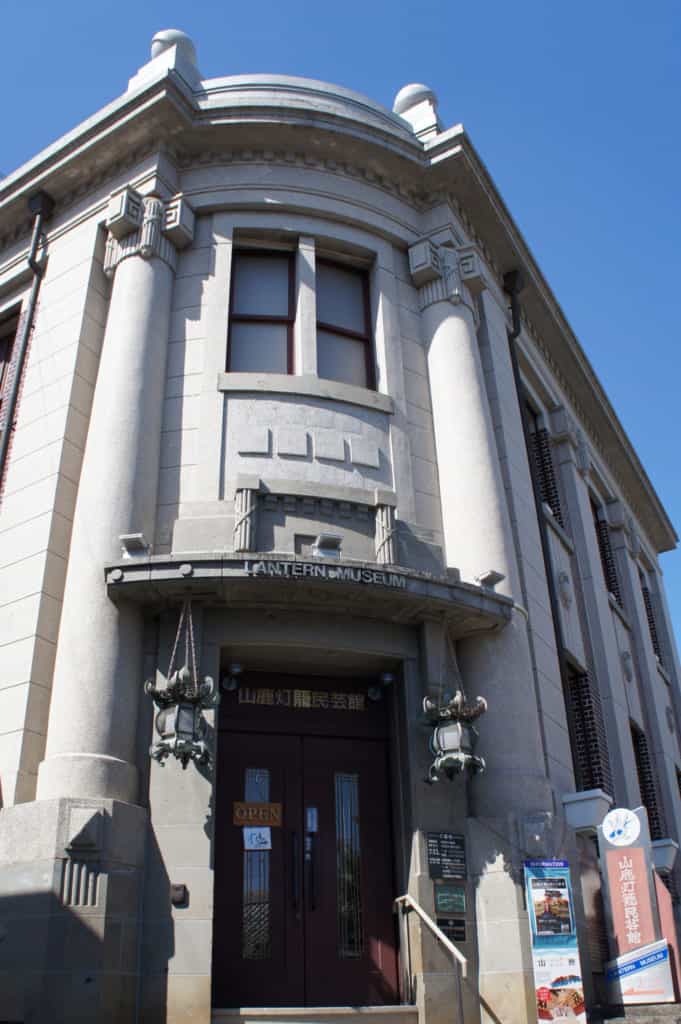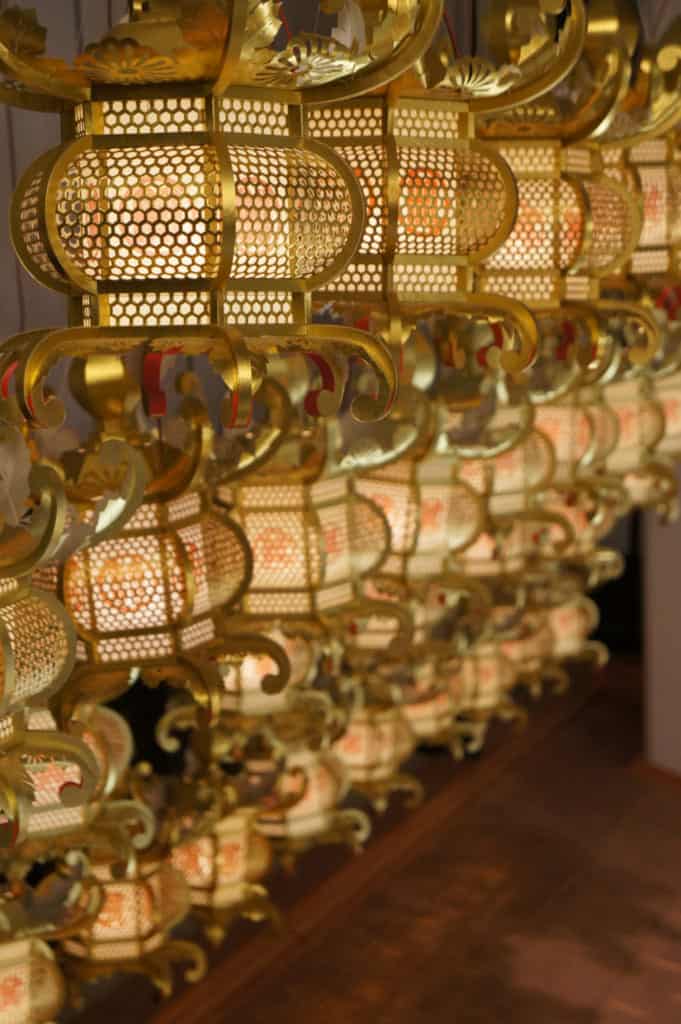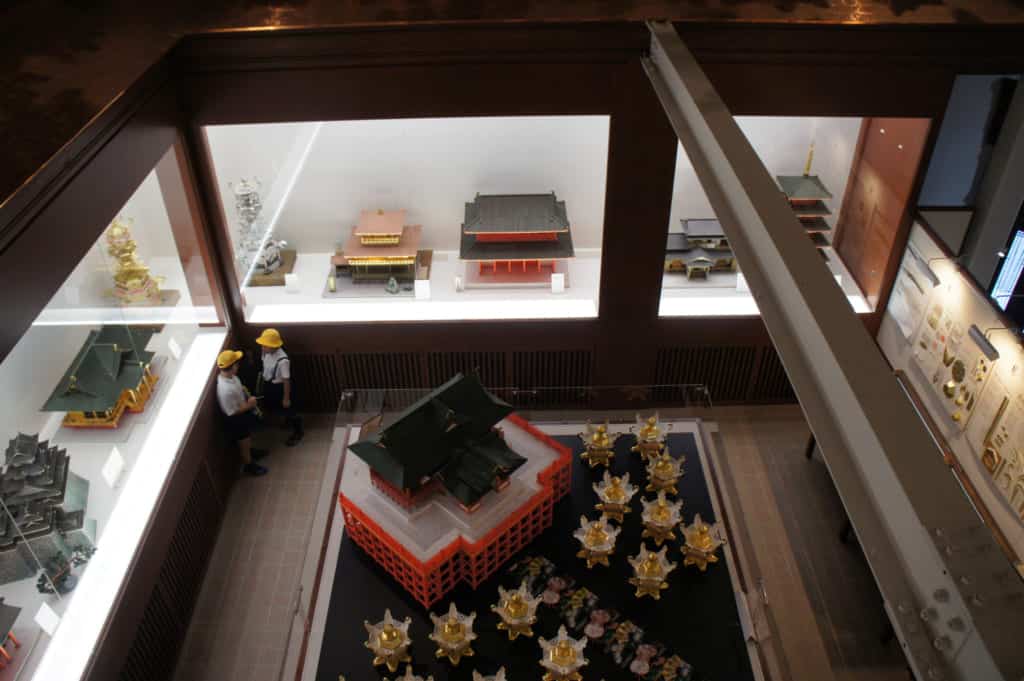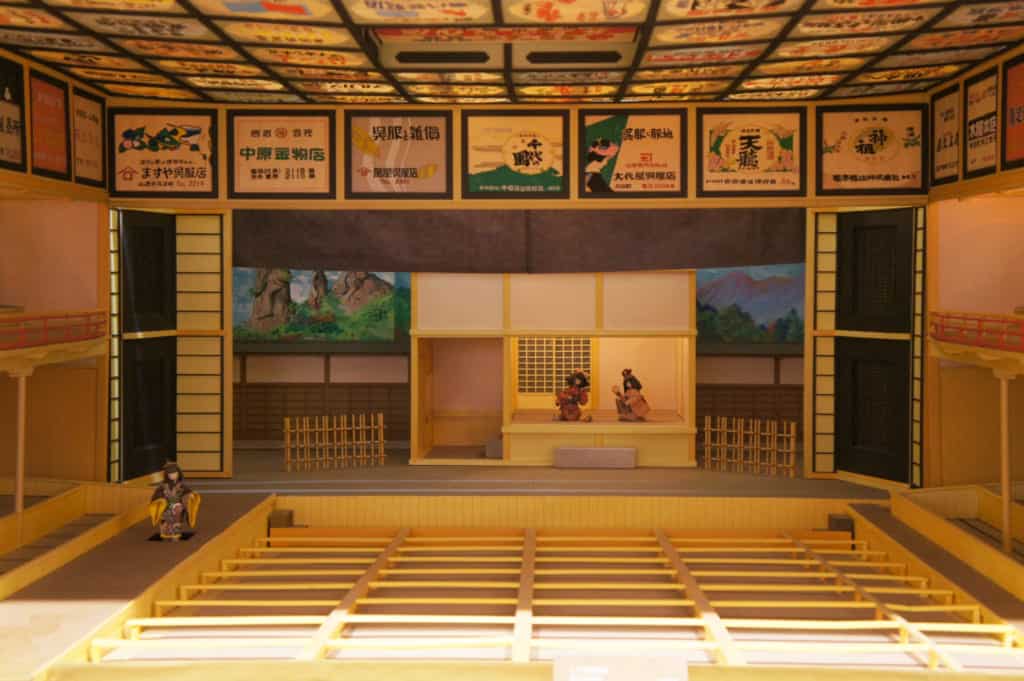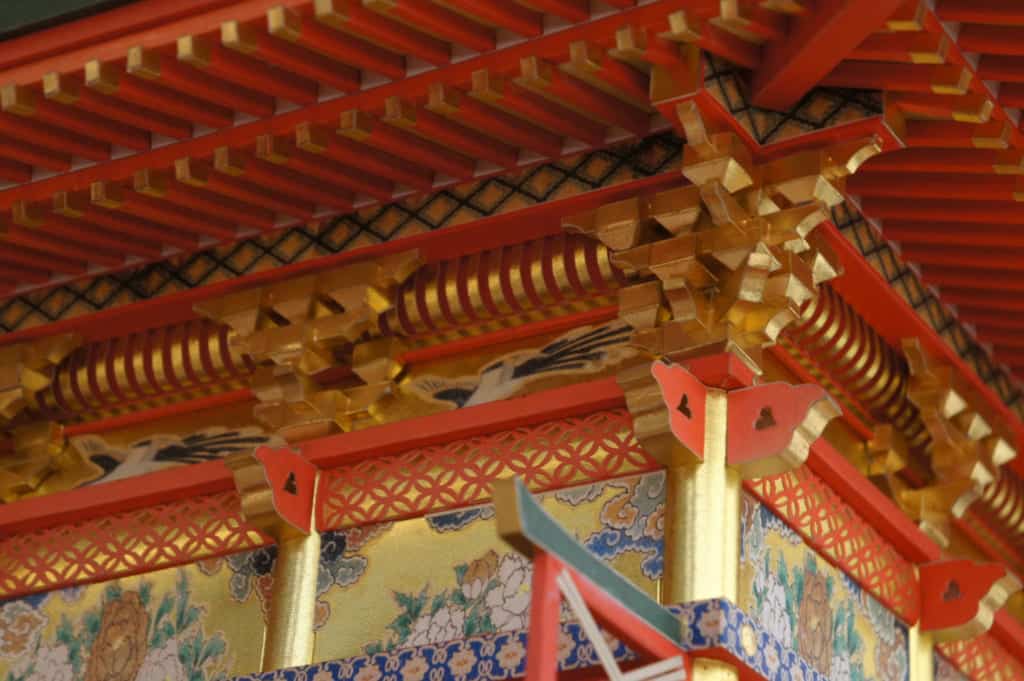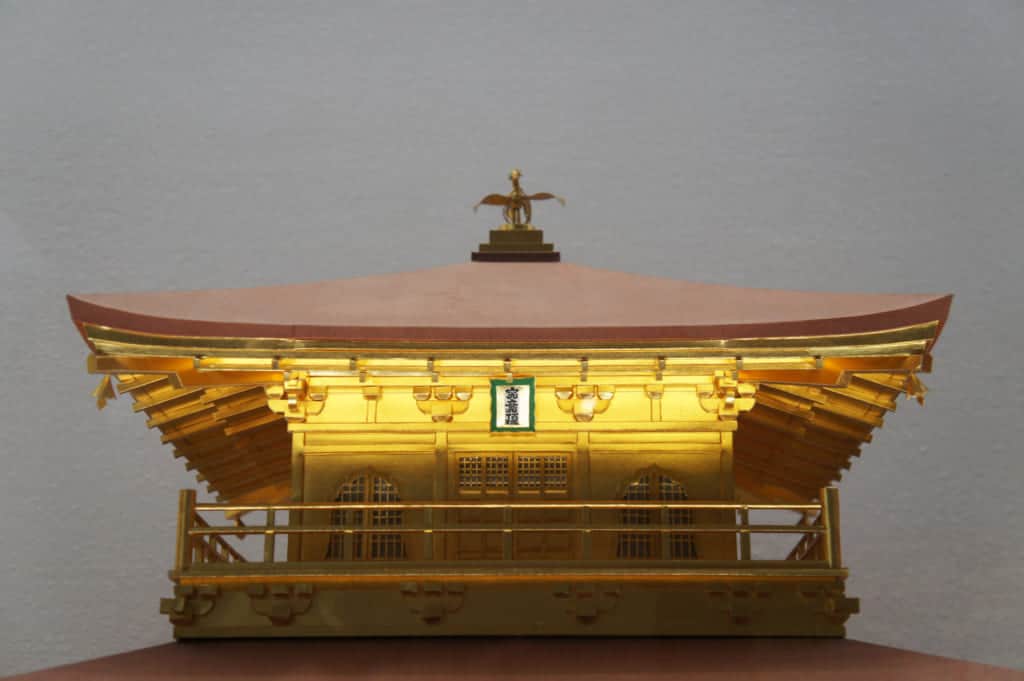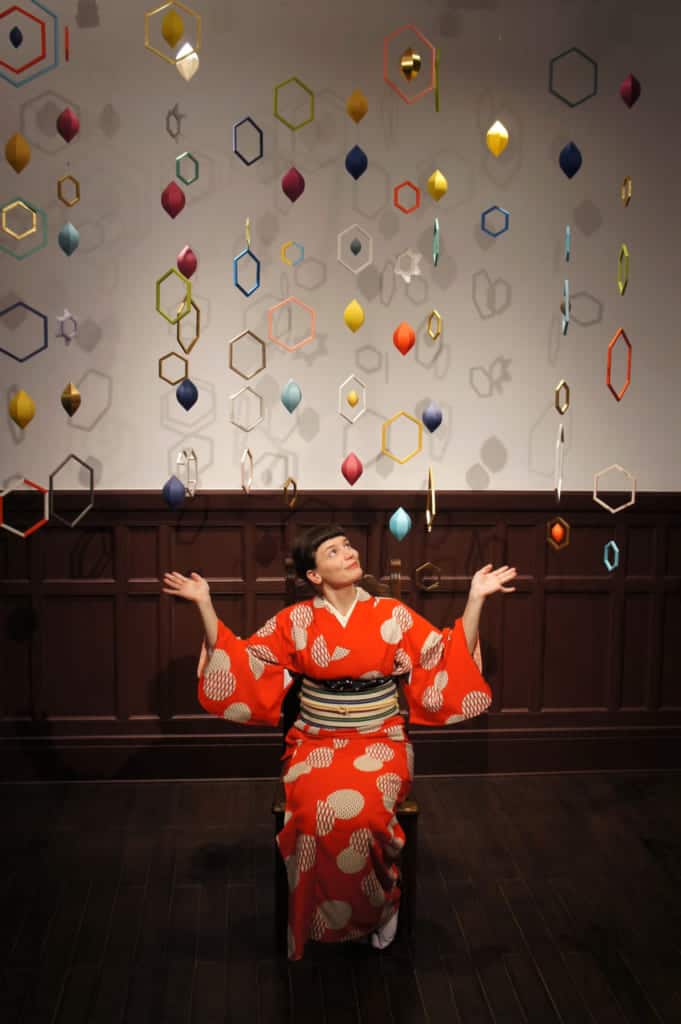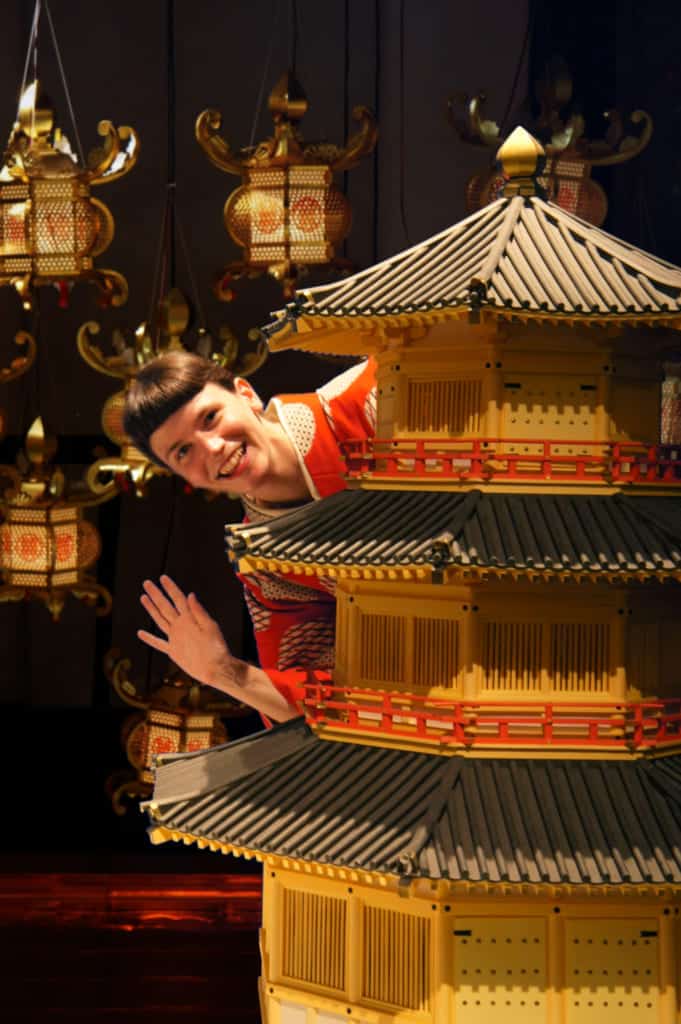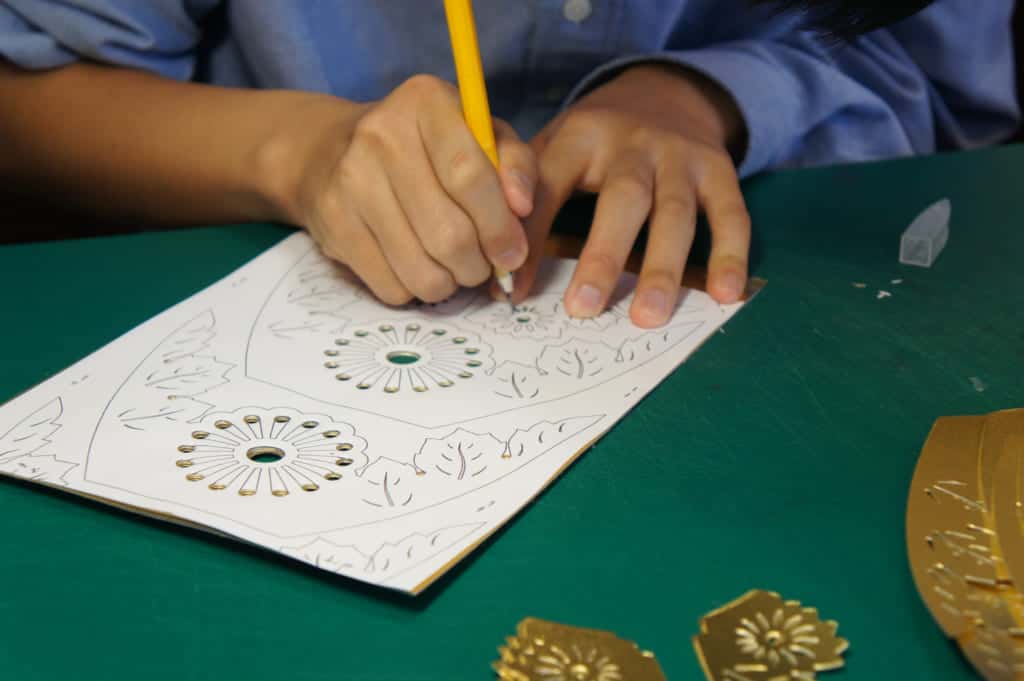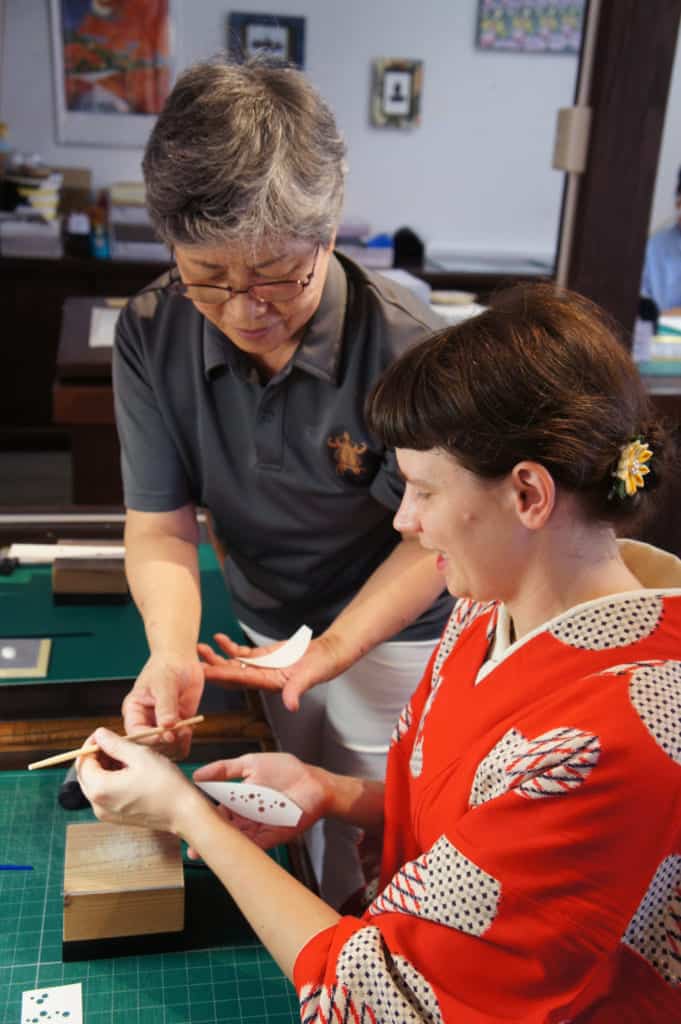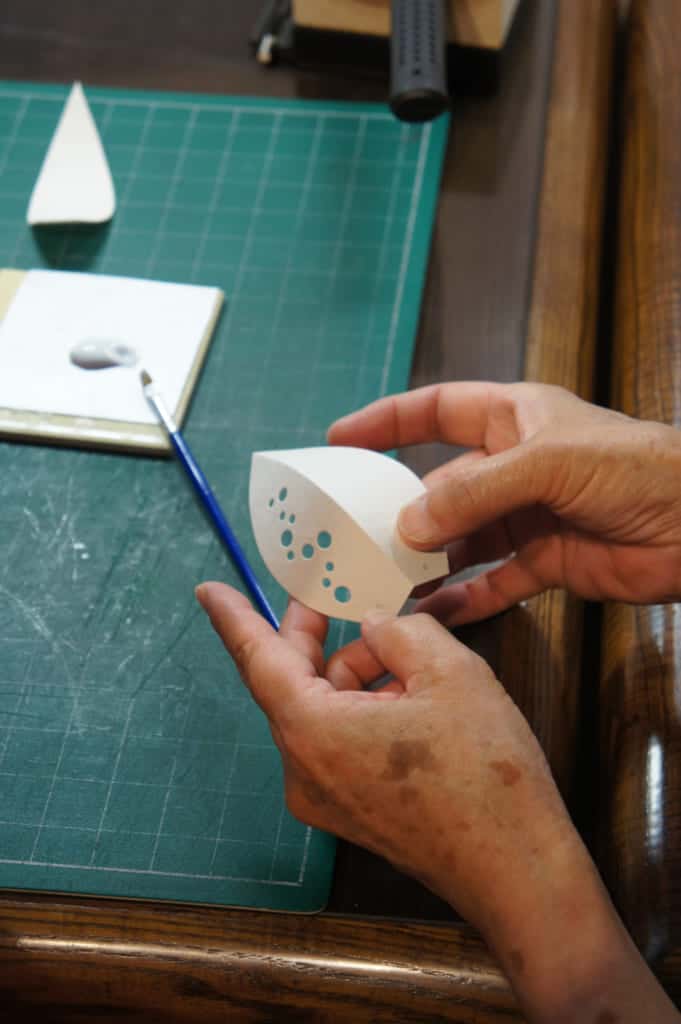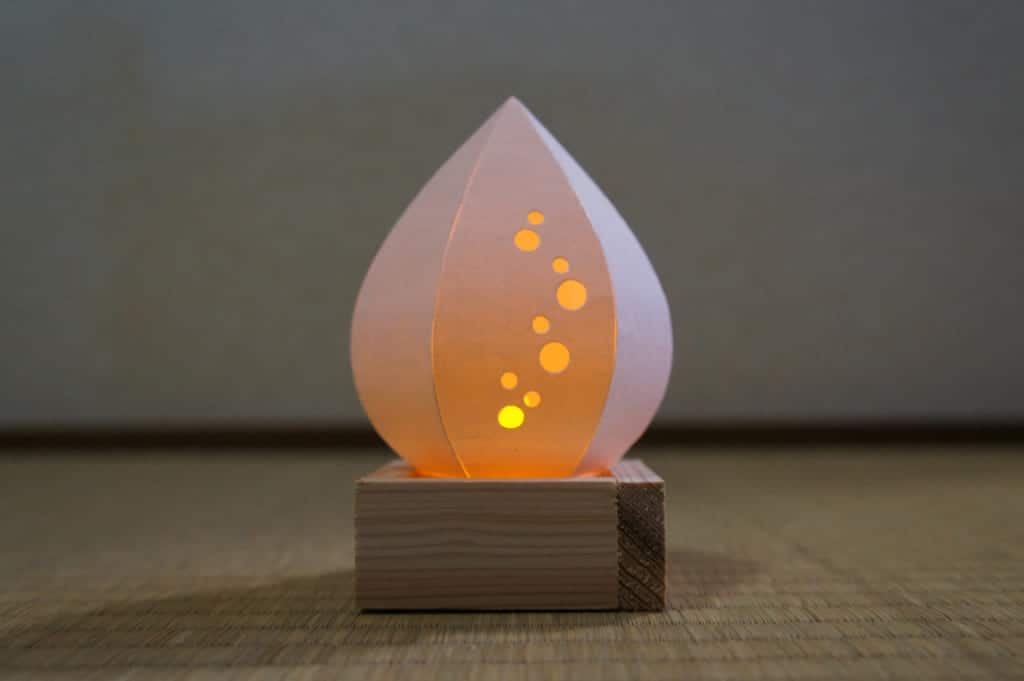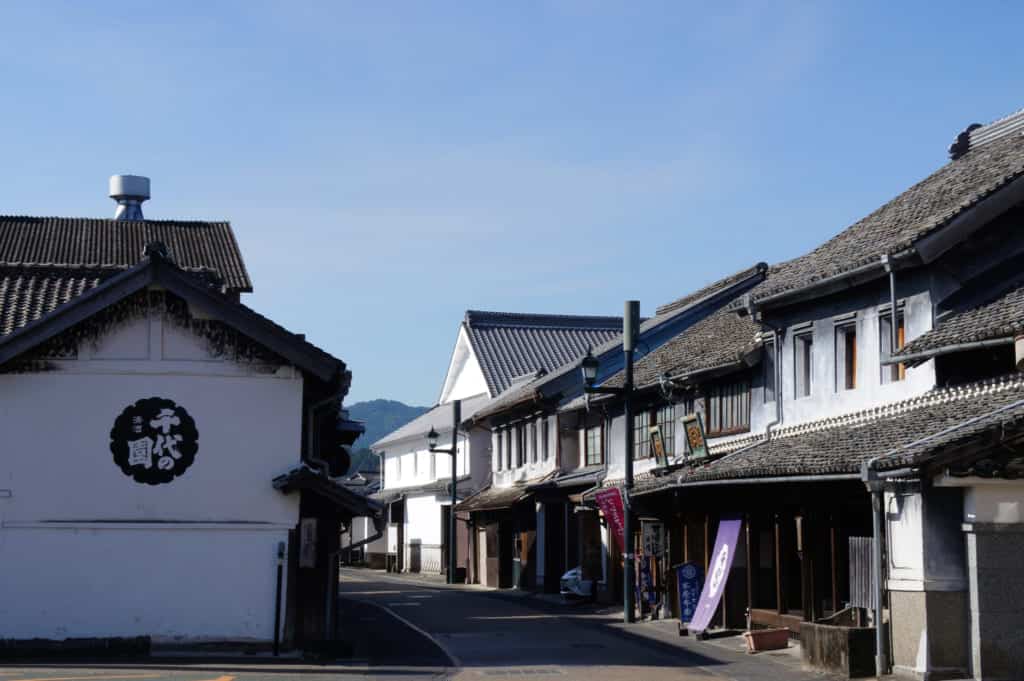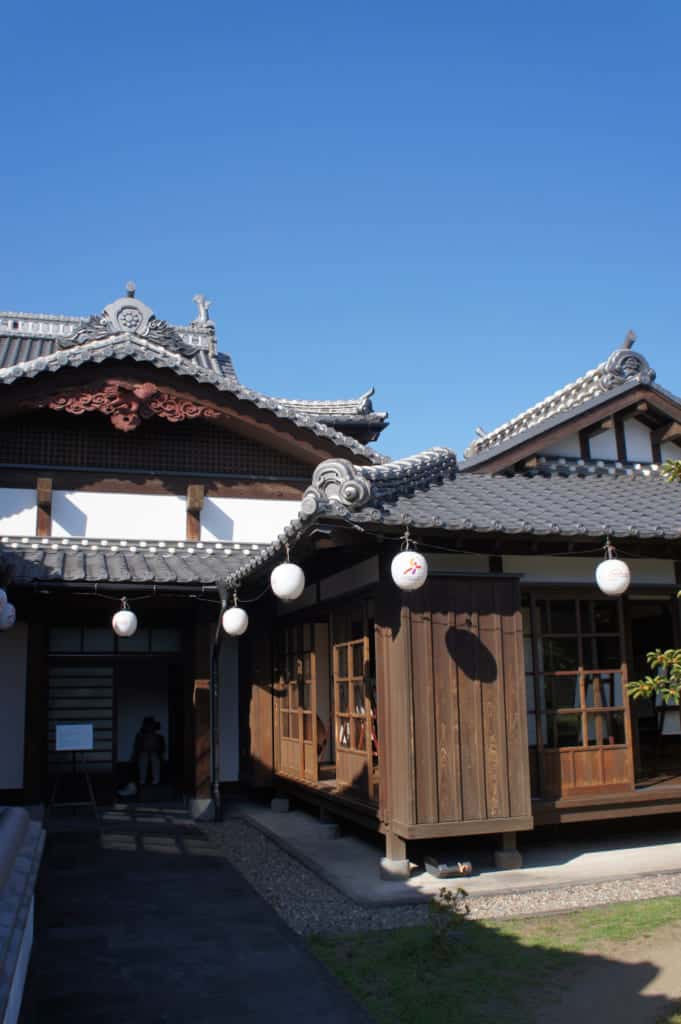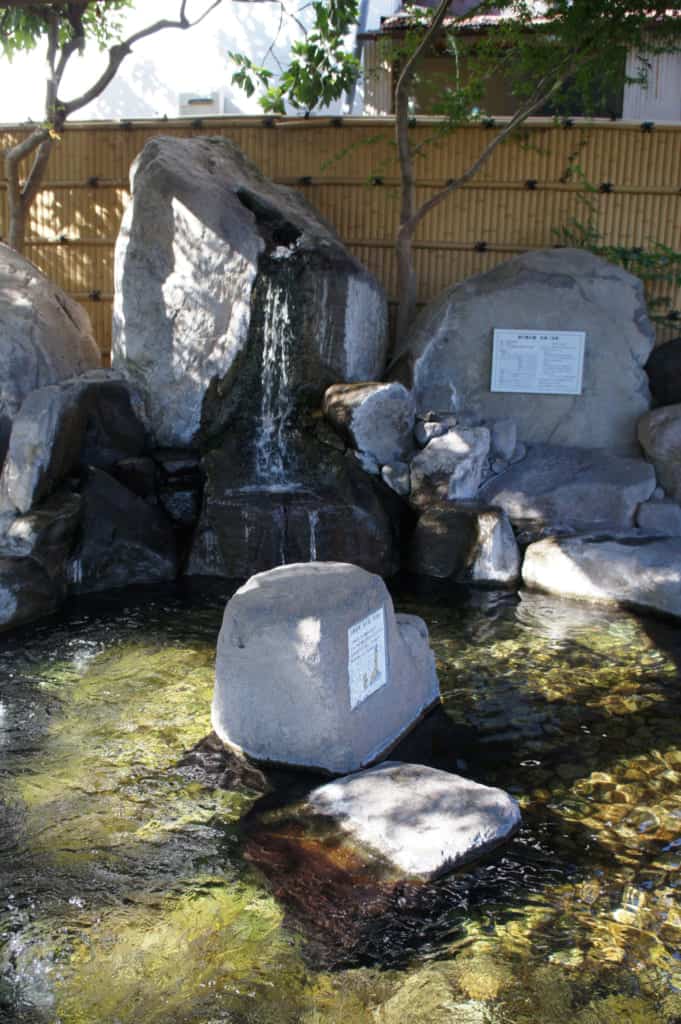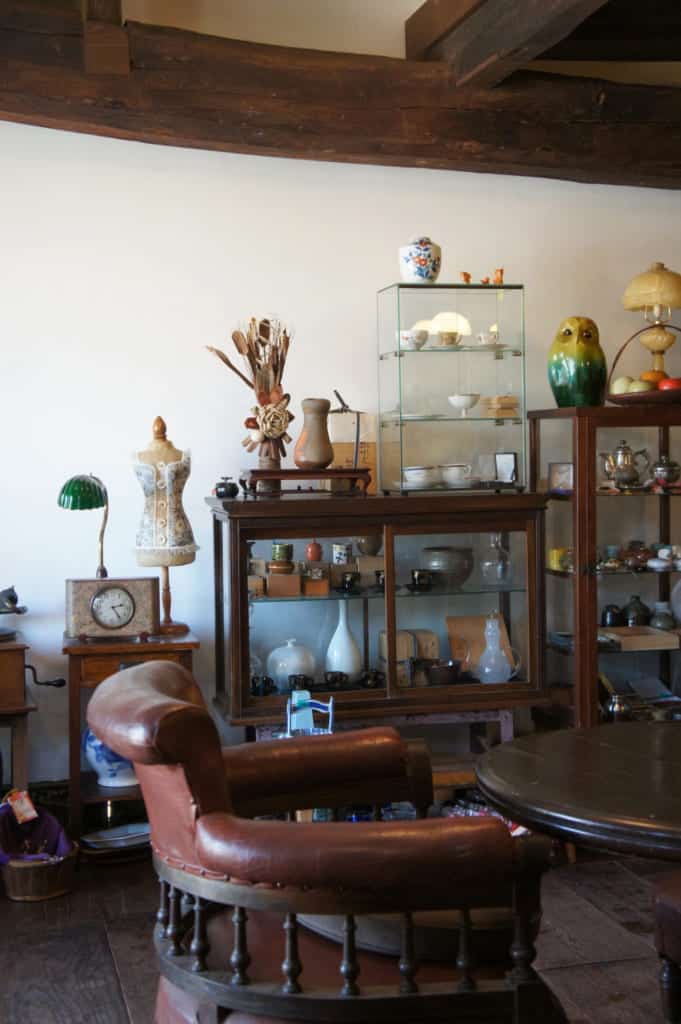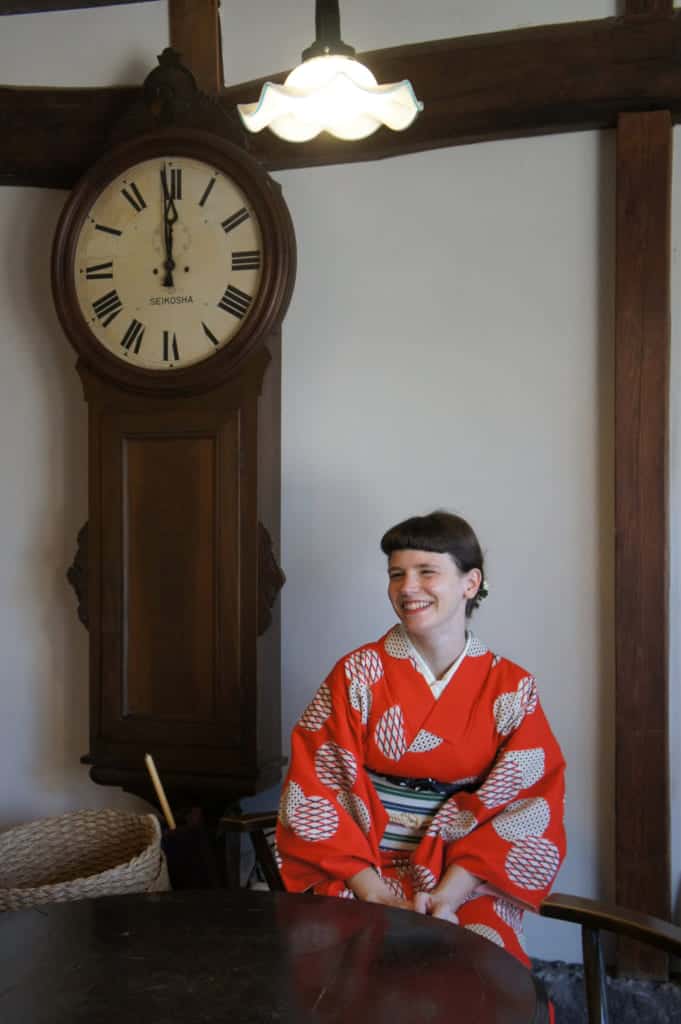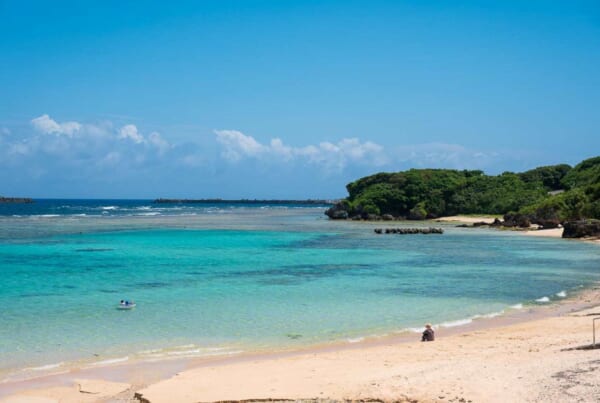sponsored by Northern Kumamoto Administrative Headquarters
Situated in Kumamoto Prefecture on the old Buzen Kaido road linking northern and southern Kyushu, Yamaga is a town filled with history, and visitors will be amazed by its numerous surprises. From the Edo period, Yamaga has been known for its hot springs, but they are certainly not the only points of interest in the town.
On every street corner, local product and tourist brochure, you will see the same motif: a finely-crafted, glowing lantern. I quickly understood that lanterns (toro in Japanese) are an essential part of Yamaga’s history and culture, and I was eager to learn more.
Dressing in an Old Kimono to Explore Yamaga
Before heading out to explore the town, I went to Kimono Otome, a small shop that occupies a traditional house where you can rent kimono. The pretty streets of Yamaga, lined with Japanese houses and old shops, make for a wonderful walk in kimono and are the ideal backdrop for taking souvenir photos.
In this shop, you can find many beautiful old kimono. They come in every style imaginable and from different eras in Japanese history. So many options make the choice difficult for customers so Risa, the shop assistant, was accustomed to helping people choose their outfit for the day and certainly made me feel the part. I decided to go for a red kimono dating back from the Taisho era (1912 – 1926) in a surprisingly modern design. To enhance the outfit’s modern look, we chose a belt (obi) that was adorned with pastel shades. Risa selected an obi that perfectly complimented the outfit, a decision best left to her expertise!
It was a simple kimono and putting it on took just half an hour. After helping me to put on the undergarment (known as a nagajuban in Japanese, a thinner kimono worn underneath the main robe), Risa adjusted my outfit with expert precision and skill.
The only thing left to choose was the obi-age which is a type of knotted scarf that’s worn above the obi when it’s tied in a style known as ‘taiko-musubi’). I went for a package called ‘modern girl’ with a black and white spotted obi-age that might have seemed unconventional but I felt it suited the contemporary style that we wanted to create!
Even though the package is called ‘modern girl’, you could customise it however you wanted and weren’t constained to that particular theme. Yamaga Asobi (which translates as ‘enjoy Yamaga’) offers packages of various themes and the ‘modern girl’ includes kimono rental and a paper parasol as well as admission to a local attraction, such as, in our case, the Yachiyo-za theatre and the Yamaga Lantern Museum. You also have the option of wearing one of Yamaga’s famous lanterns as headgear. This may seem strange and a little uncomfortable but the headdress is entirely made of paper and is surprisingly light! With my outfit complete, I was ready to wander the streets of Yamaga and learn more about its lanterns.
Visit to Yachiyo-za Kabuki Theatre and Exploring Yamaga’s Lantern Dance
The first stop on my stroll around Yamaga was Yachiyo-za Kabuki theatre, which was built in 1910 and classified as a building of great national importance in 1988. The theatre used to be a popular meeting place for the residents of Yamaga and somewhere to enjoy both theatre and cinema productions. However, the introduction of the television in the 1970s was the start of the theatre’s decline and the building gradually fell into disrepair due to a lack of visitors. Many years later, the theatre was given a new lease of life and a large renovation project began which, upon completion in 2001, saw the building restored to its former glory from 1923.
The Yachiyo-za theatre is again full of life and is the setting for regular performances by Tamasaburo Bando, one of the biggest stars in Kabuki theatre.
Culture in Yamaga is represented in other ways, such as by the “dance of lanterns”. During my visit, I was able to see two dancers performing the dance. The local spectacle, connected to Toro Matsuri (灯籠祭り, festival of lanterns), is an event which attracts about 100,000 visitors each year to Yamaga.
It takes place on August 15th and 16th during the O-bon festivities and involves a diverse range of activities such as a torchlight procession and a fireworks display. The festival culminates in the impressive “dance of 1000 lanterns”, involving 1000 women, dressed in identical yukatas with illuminated lantern headdresses, made of paper, dancing in a circle.
The dancers wear the same outfits and perform the dance throughout the year so it’s possible to see it at any time. The dance is also reminiscent of the “Yamaga Toro Roman Hyakka Hyakusai” (山鹿灯籠浪漫 百華百彩) which is held every Friday and Saturday in February. The town is decorated in paper parasols, bamboo and candles which gives it an enchanted atmosphere.
If you would like to attend this event, known as “八千代座物語” (Yachiyo-za Monogatari), see the timetable online (only in Japanese).
To fully enjoy the Yachiyo-za theatre, I would recommend the guided tour, even for those who cannot understand the Japanese explanations. Beyond the grand chandelier, the red lanterns and the 1920s-inspired ceiling, there are other areas of the theatre which can only be visited as part of the guided tour.
During the behind-the-scenes look at the theatre, you are able to go backstage and see the painted sets awaiting their turn and discover the inner workings under the stage that are used to make the actors appear and disappear. The tour also showed us the secret underground corridor which is used as an entrance and exit point for the actors to reach the hanamichi — an extra stage running through the audience used in Kabuki theatre. The corridor also features a hatch (called a “suppon”) which allows actors to appear or disappear in truly dramatic theatrical fashion.
Visit to Yamaga Lantern Museum
After wearing a paper lantern myself and seeing the dancers in action at Yachiyo-za theatre, I went to the Yamaga Lantern Museum where I was able to explore more about their history and learn the secrets of how the lanterns are made. The museum is in a former bank that was built in 1925 and regarded as an iconic western-style building.
The museum displays several Yamaga Toro lanterns, created from glue and paper using techniques passed down from the Muromachi period (1392 – 1573). The town is renowned for products made from artisan paper, such as Yamaga umbrellas and ‘kutami uchiwa’ dishes.
Yamaga’s artisans have mastered the technique of making impressive pieces and they have created many buildings from paper, which can be seen in the museum.
The interior of the Yachiyo-za theatre is made entirely of paper.
As part of the Yamaga Asobi programme, a photo area has been set up where visitors can capture their visit to the museum and the walls of the building have been adorned with a blue background to make the overlay of images easier. There’s also an area with coloured paper mobiles suspended from the ceiling which is the perfect place to capture a photo as it looks very modern.
Learning to Make Yamaga’s Lanterns
Seeing all the paper creations makes you reflect on the time required to master such a complex skill and it’s difficult to fully imagine how it’s achieved. The annex of the museum allows visitors to watch craftsmen make the lanterns and also gives you the opportunity to join in.
Participation in the lantern workshop is one of the activities offered by the Yamaga Asobi program so I decided to make a small, modern lamp myself during my visit.
This simple white paper lamp might seem different to the lanterns on display in Yamaga but it’s largely due to the shape of the upper part. However, making them is certainly a lot of fun. First, make the shape of the lantern by piercing the paper with a cutter and a mallet then bend the pieces of paper, pushing out the small white fragments to reveal the holes and curving the paper pieces with a stick. The second part is the most important and involves sticking the pieces of paper side by side to form the shape of the lantern. It’s a delicate job and requires a lot of concentration but the end result is very beautiful.
I was exhausted, and I asked how long it took to master the art lantern making, to which I was told was 15 years. It really surprised me! My view of Yamaga’s lanterns suddenly changed and I felt an overwhelming sense of admiration for the craftsmen and women who continue this tradition. I left the museum with my small, handmade lamp which, although far from perfect, was the ideal memory of a day full of discoveries and new encounters.
A Relaxing Town
My visit to Yamaga centred around their famous lanterns but it was also a good place to wander through the ancient streets, especially along Buzon Kaido as the buildings remind you of a different period in history.
Another not-to-be-missed place is Sakura-yu hot spring in a building that was built 370 years ago. Even though it was destroyed in the 1970s, it was eventually renovated in an Edo period style and reopened in 2012. For only 350 yen, you can experience the thermal water of Yamaga in a truly timeless ambiance.
For those who don’t have the time to visit Sakura-yu or don’t want to experience the hot spring culture, there’s a free foot spa (ashiyu) which is located just next to Sakura-yu.
The town is a nice place to explore on foot and you can find small cafes along the way to relax. During our trip, we stumbled upon Antique & Cafe Ide and were immediately captivated by its laid back atmosphere. You can try their coffee, tea or pastries, served from vintage porcelain, while browsing Japanese and Western-style antiques.
Access and Practical Information
While a car is the best way to travel around Northern Kumamoto, it’s possible to get to Yamaga by bus. From Kumamoto, it takes about 1 hour by train and bus and from Hakata (Fukuoka), it’s about 1 hour 30 minutes, You can find more detailed information about how to get there on this page.
Please note that a free shuttle bus serves 4 towns in Northern Kumamoto: Tamana, Nagomi, Yamaga and Kikuchi. The shuttle departs from Kumamoto airport and JR Kumamoto Station. You can find more information on this website and this PDF document. (This shuttle only operates in November 2019 and January and February 2020).
About Yamaga and Yamaga Asobi Program
Yamaga Tourist Information Office provides information on their website about the town as well as the Yamaga Asobi program. You can also find more information about the region on the Kikuchi Rover Basin – World Heritage website.
Otome Kimono Rental
If you would like to rent a kimono in Yamaga, check out Kimono Otome (only in Japanese). I went for the “modern girl”/“modern boy” package and this can be organised through the website as well.
Yachiyo-za Theatre and Yamaga Lantern Museum
Information about the theatre can be found on this page and about the museum on this page. You will find more information about Sakura-yu hot spring on this page.
Access to Yamaga From Other Areas
From Fukuoka Airport: about 1 hour and 10 minutes by car
From Oita Airport: about 2 hours and 30 minutes by car
From Kumamoto Airport: about 50 minutes by car
Translation by Mark Webster


